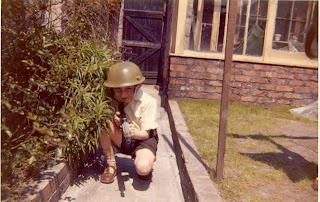 I did a review of the year for 2009 which felt like my tradition but I now realise that it was actually the first time I had done it. As I sit down to consider 2010, I am surprised to find that the pressures of the year make a simple review less easy. The combination of the depression across the UK at the dark forces that have assumed control of the state, the professional pressures from this (which put many of us in the position of being resistant while charged with tasks of implementing the destruction of public services), the sadness from bereavement, and the massive but more exhilarating challenge of putting together the next and last Text Festival (while also working on its replacement) – all this gives the year a somewhat distorted retrospection. For a start off when I look to review cultural highlights I find that I only managed to get to the cinema once all year – that was to see Inception. A shortlist of one would hardly have much credit, though I could just say Inception and imply that I had seen more. I had the energy to see a lot more video films so the film of the year would have to be Tom Ford’s A Single Man – which actually came out last year, but to quote Michel Serres, whom I was reading while in Marrakech before Christmas: “Few people and even fewer thoughts are completely congruent with the date of their times”.
I did a review of the year for 2009 which felt like my tradition but I now realise that it was actually the first time I had done it. As I sit down to consider 2010, I am surprised to find that the pressures of the year make a simple review less easy. The combination of the depression across the UK at the dark forces that have assumed control of the state, the professional pressures from this (which put many of us in the position of being resistant while charged with tasks of implementing the destruction of public services), the sadness from bereavement, and the massive but more exhilarating challenge of putting together the next and last Text Festival (while also working on its replacement) – all this gives the year a somewhat distorted retrospection. For a start off when I look to review cultural highlights I find that I only managed to get to the cinema once all year – that was to see Inception. A shortlist of one would hardly have much credit, though I could just say Inception and imply that I had seen more. I had the energy to see a lot more video films so the film of the year would have to be Tom Ford’s A Single Man – which actually came out last year, but to quote Michel Serres, whom I was reading while in Marrakech before Christmas: “Few people and even fewer thoughts are completely congruent with the date of their times”.I did see a lot of exhibitions this year – a lot of which were very strong making it invidious to pick out the exhibition of the year. An honourable mention should go to the Moomin exhibition in Bury - while I set it up, the curation of the spaces was a collective effort in the Bury team to whom congratulations are due. But the final decision comes down to Jannis Kounellis at Ambika P3, London, and Brass Art’s The Non-existence of the Unnamed at International 3.

Both great shows - the only way to settle it was to think if I could see only one of them again which one would I re-visit: and therefore Brass Art just shades it (pictures).
In terms of poetry, I haven’t read very much this year either – the three books that most stick in my mind are Derek Beaulieu’s How to Write, Helen Hajnoczky’s Brocade Light and When blue light falls 2 by Carol Watts. Of the three, I probably enjoyed Carol’s most, but I think the first part also ‘won’ it for me last year. Saying I haven’t read much poetry isn’t strictly true as I have read loads of visual poetry, in research for the vispo show in the Text Festival. Locating many of these books by date is pretty hit-and-miss so as with my criteria above, I ignore the date of publication. Particularly brilliant, but also probably the furthest from a contemporary publication date was Márton Koppány’s Investigations. I am very fond of Satu Kaikkonen’s Fif poems and The Hidden Point which she gave me when we met in Tampere in October, but the most beautiful vispo book I got this year was Derek Beaulieu’s Silence http://www.redfoxpress.com/dada-beaulieu.html . The best poetry performance I saw was also by Derek at Bury Art Gallery in July.
When I realised that due to the pressures already acknowledged my review of the year was going to be thin on positives and in the depressed mood of the time, I considered whether to supplement it conversely with ‘awards’ for the truly awful shows one sees in a year. But the despicable Conservative Government assault on British society is a low point against which even the worse exhibition of the year can’t compete. So I leave this year instead with a contender for the funniest moment of the year. Browsing in a bookshop I picked up a poetry book and read:
“I am a sperm-whale”... The opening line of Simon Armitage’s latest book.
Happy New Year













































